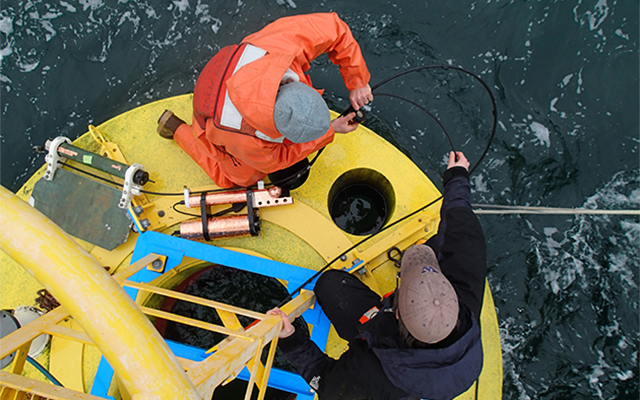3 meters below the surface of Washington State’s Hood Canal, the very first SeapHOx V2s hummed along next to an experimental sugar kelp farm. In a previous life, these SeapHOxes were among the first SeaFET V1s: when Sea-Bird Scientific made the decision to upgrade the line of pH sensors to the SeaFET V2, these early instruments were readily available for upgrades. Engineers pulled the original boards out of these instruments, fitted them with all new hardware, and combined them with a 37-SMP-ODO to form the first alpha “SeapHOx V2”. After hours of impressive performance in controlled test baths, it was time to test serial number 001 and 002 in the field.
001 and 002 soon found themselves on separate moorings, situated on opposite ends of the experimental kelp farm. The aquaculture site itself is an experiment to identify if sugar kelp farming can help sequester carbon to combat ocean acidification, funded by the Paul Allen Foundation and led by the Puget Sound Restoration Fund with support from a variety of research partners. As a pH sensor, the SeapHOx V2s were useful additions to the moorings devoted to studying ocean acidification, and the relatively fast sampling speed made it possible to track rapid changes in the dynamic environment. Several additional sensors joined the SeapHOxes on the mooring, including a 16plusV2 CTD, chlorophyll sensors, current meters, and another
Researchers are still analyzing the data for the larger aquaculture project. For Sea-Bird Scientific, the successful deployment provided a trove of field validation data from the prototype sensors. 001 and 002 performed admirably for the

